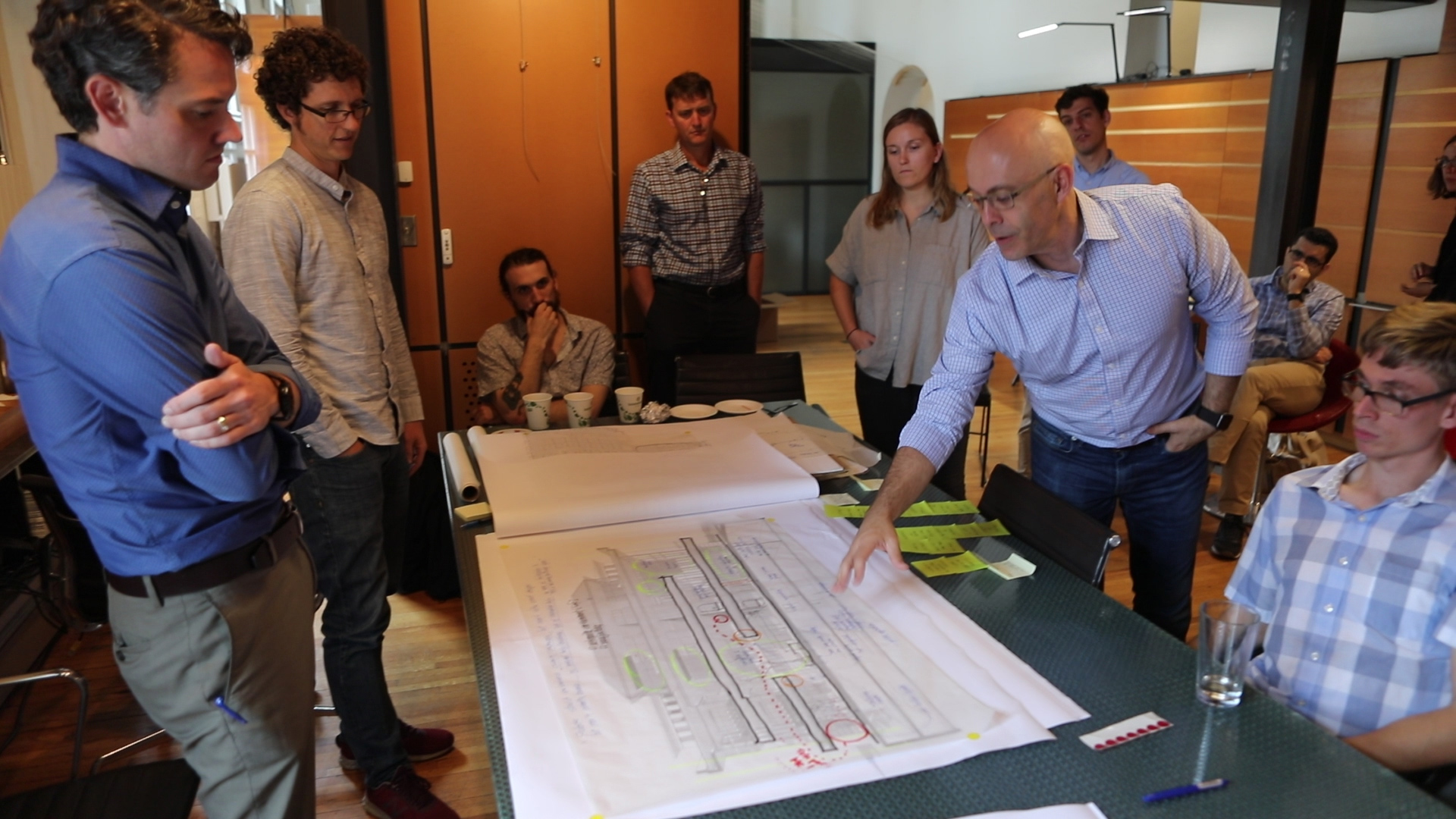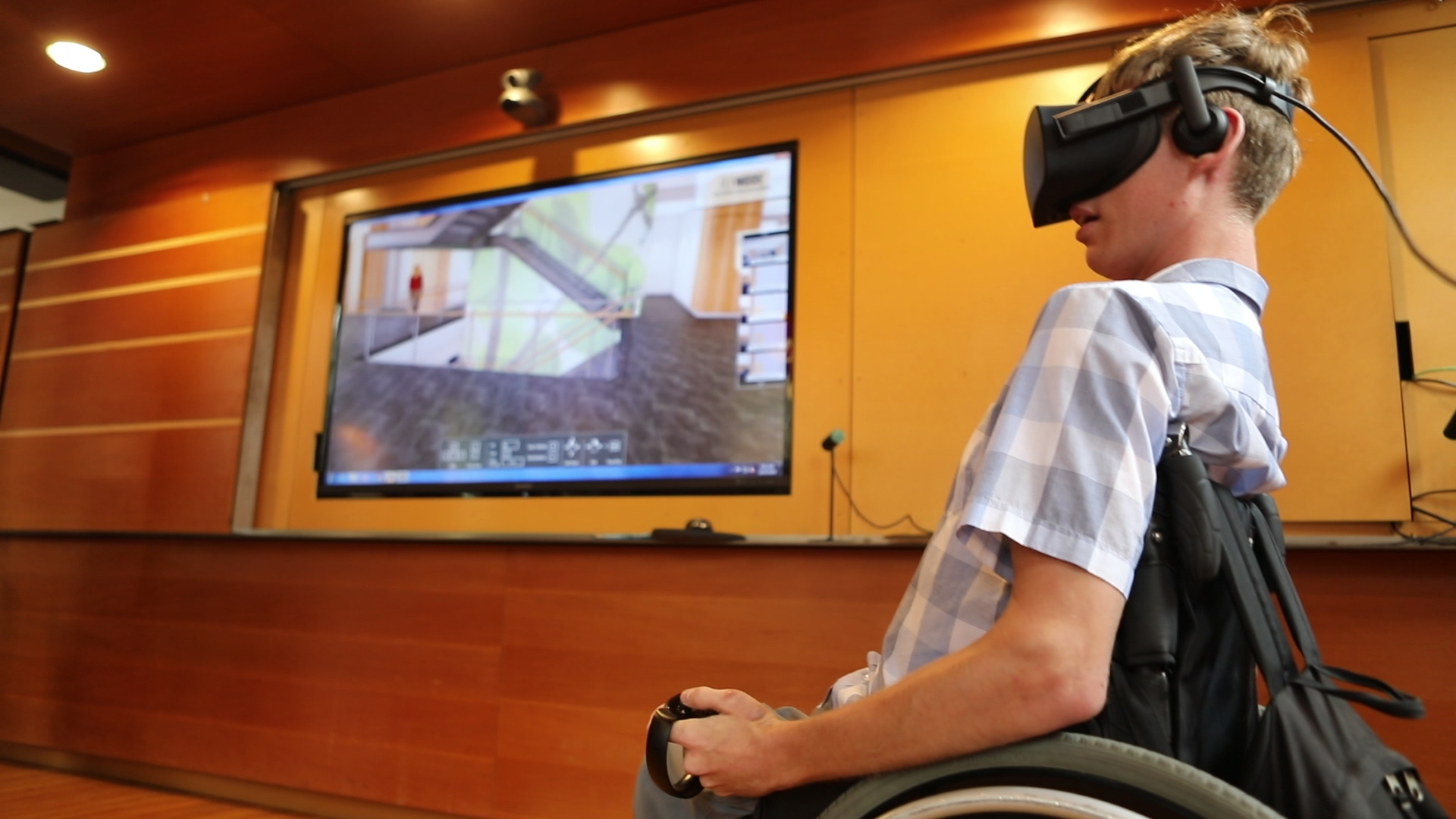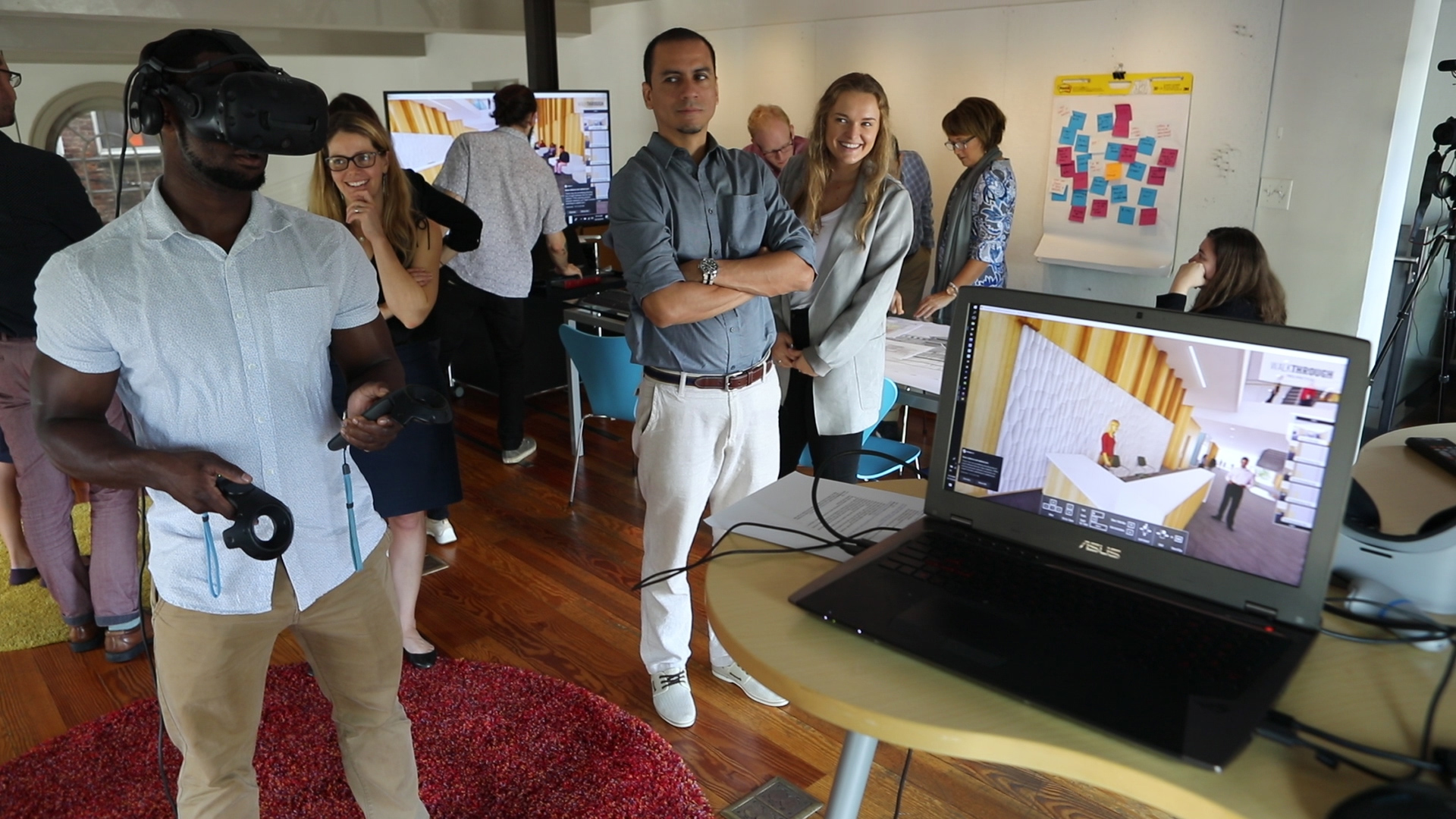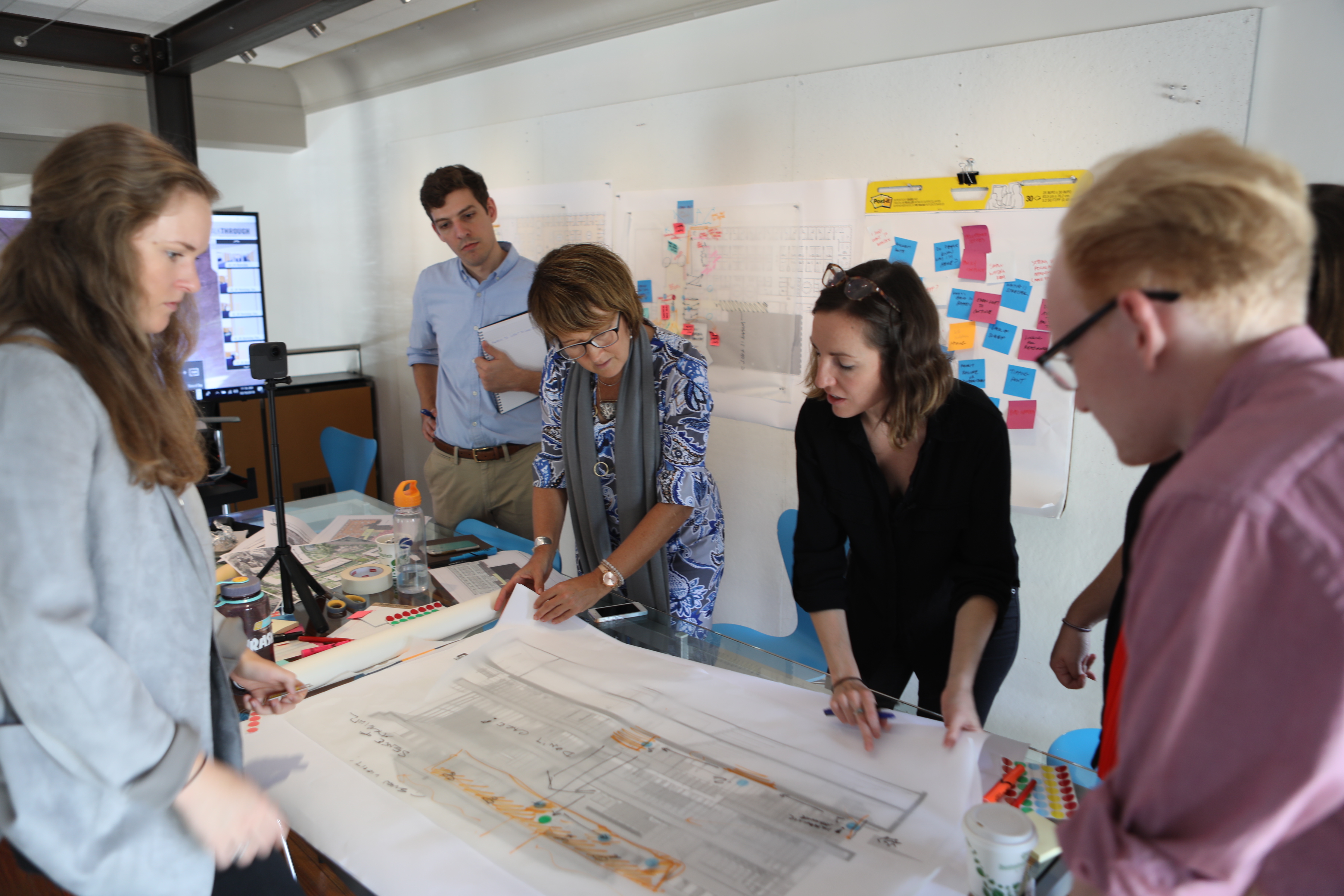Virtual reality has incredible potential to help us engage clients with architecture,” says Joe Celentano, VMDO principal, after experimenting with virtual reality (VR) for design. “VR could be a breakthrough tool that supports how we collaborate with our clients, partners, and stakeholders to help people engage with virtual spaces in the early phases of design.”
To test VR as tool for design collaboration, VMDO recently hosted a VR workshop focused on the design of the new Student Health and Wellness Center at the University of Virginia – a new interdisciplinary health facility emphasizing student wellness and preventive healthcare, slated to open in 2021.
Human-Centered Design Approach
The VR Workshop combined a six-phase, human-centered design approach with UVA stakeholders, students, and VMDO’s design collaborators to explore many of the public and shared spaces within the three-dimensional, virtual design.
“We’re testing this VR process with all of our collaborators and users to help us think about the design in whole new way,” says VMDO’s Lauren Shirley, the lead project architect for the Student Health and Wellness Center and the lead facilitator of the VR workshop. “It’s all about a human-centered design approach to help us gain an understanding for the patient experience and insights for improving that experience through our design process.”
Key Partnerships + Collaborators
Along with design partners Duda | Paine Architects and with support from friends at Sasaki and UVA’s Medical Design Program, VMDO’s workshop harnessed VR’s immersive power to support more inclusive and engaging approaches to designing key spaces within the facility. Workshop participants – from a wide range of UVA stakeholder groups including students, UVA health departments, counselling services, and UVA project managers – mixed into three teams with architects and facilitators to virtually walk-through the design and test simulate what it feels like to be in the spaces. As much as possible, findings from the workshop were incorporated into the building’s design to help align participants’ feedback with the built reality.
“How does UVA adopt building practices or policies of intentional health promotion in every building they make?” asked Dr. Matthew Trowbridge, Director of the Medical Design Program at UVA. the workshop’s collaboration between architects, university leaders, and student healthcare providers is vital to charting new frontiers in preventative health and wellbeing. Dr. Trowbridge says, “I think proactively creating spaces that allow us to most effectively support patients – not just when they’re sick, but also helping them to stay well – is an exciting new era.”

VR Workshop Six-Phased Design Thinking Process
To help workshop participants empathize with future patients and visitors to the building, Lauren Shirley and the VMDO team created a unique six-phased, design thinking process.. These steps included:
1) Introduction
2) Empathy Warm-Up
3) VR Simulation
4) Journey-Mapping
5) Design Sprint
6) Report-Out
Shirley said, “We’re not here to pick apart the design, nor to redesign it either. We are here to ask ‘How might we’ ask questions as part of the design process. How might we optimize public spaces, the current entrance experience, or the lobby and check-in desk using VR?”
By encouraging stakeholders to test space before it’s built, VR helps advance decision-making, leverage diverse expertise, and capture empathy-driven insight – overall creating a more efficient and intelligent design process.

Key Takeaways + Lessons Learned
The workshop engaged participants from a large cross-section of leadership, user, and student groups and feedback from the workshop was incorporated into the design of the building. When carefully implemented, even simple virtual reality technology can immerse a wide variety of people in a building’s design – allowing real-time navigation, enhancing understanding of three-dimensional space, and creating empathy for others’ experience in the space – and, through this process, transform their perspective and feedback.
“I think there's this really cool new awareness of how important space is in terms of the social environment it creates,” said Dr. Trowbridge reflecting on the future of design and preventative health care. “We're moving away from just purely delivering medical care, but to trying to get into preventive services -- the idea that the building is not just inert. It can make it easier to deliver a certain type of preventative service or well-being experience. I think it's really exciting. It's a whole new heart of healthcare and it really is just beginning.”


